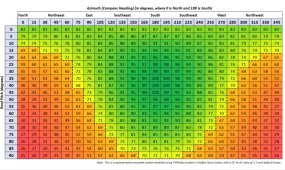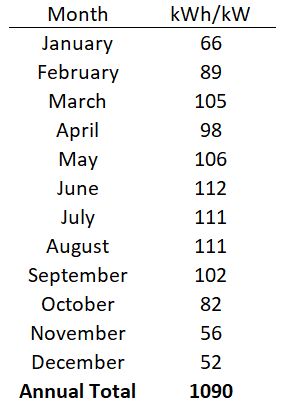Bluedog225
Texas
- Joined
- Nov 18, 2019
- Messages
- 2,909
I’ve been taking care of an fla for the last 10 years. What a gigantic pain in the arse. Never again for me.
The best return on investment will be energy efficient appliances and other devices. A generator is often less expensive than batteries but batteries do not have operating costs like a generator and it is hard to predict what the price of propane will be. Without knowing details about the location and the weather and insolation of your location it is hard to make a suggestion, I am in a temperate environment and long term am eliminating natural gas. I replaced my gas forced air unit with a heat pump Air Conditioner that is zoned so I only have to heat the zones which I will be occupying. This year i have added more solar panels and will be replacing my gas water heater with an electric heat pump water heater. The oven and dryer are electrick and the cooktop eventually will be replaced by an induction unit. I do have the grid as a back up because my winter electrical consumption is greater than summer.I use a LOT of power so I'm curious as to whether I can make this work. I'm currently using 70-80 kWh per day because both my wife and I work from home and I run an electronics repair shop from here. On the weekend I either work on cars, do some welding or build something in the wood shop.
Can you be more specific Blue Dog? Is it having to monitor and fill the water or is it more than that? Remember I'll be retired and I'm an electronics tech so checking water levels once a week won't bother me too much but if there is more I'd like to hear.I’ve been taking care of an fla for the last 10 years. What a gigantic pain in the arse. Never again for me.
Can you be more specific Blue Dog? Is it having to monitor and fill the water or is it more than that? Remember I'll be retired and I'm an electronics tech so checking water levels once a week won't bother me too much but if there is more I'd like to hear.
I pulled the house plans and I've got 2700 sqft of roof. That's enough space for 148 panels if my math is correct. The roof faces SE at a 5 degree angle and I'm not willing to change my house plans so I'll have to compensate for inefficient angles with more panels.
The generator will run on diesel.
these used to just have straight AC motors in them but newer models have servo and multiphase driven motors that are not so heavy on startup.
But consider LiFePO4, and find a way to keep it at comfortable temperature. I would also put it where fire wasn't a threat to house, even though relatively safe chemistry.
What do you mean by 5 degree angle?
Electricity will cost you $1.00/kWh from the generator.

TBH, the "separate building for fire safety" really turns me off. I'm old and old school I guess, FLA is a technology I've been working with for a lot of years. I know how to work a hydrometer and I'm familiar with equalizing processes. I also know how to empty a battery, recondition the plates and fill it back up with new acid.
I like that Trojan owns factories in North America and builds the batteries here.
The roof pitch is 5 degrees from flat. It's oriented at about 135 degrees from north = SE
I'm aware, it won't be 24/7 and sometimes you have to trade $$ for convenience. Running the genny a few hours a day also means that I can run my woodworking gear, compressor, welder etc straight off the genny and NEVER off the inverters. I've rebuilt enough RV inverters to know that the surge of heavy motors is a blown power stage waiting to happen. I'd like to find and strangle the salesman that is telling people they can run their AC on the RV with the inverter. LOL
The genny is going to be up the hill at the utility building so probably too far for heat exchange, some of the army surplus units I've looked at are also air cooled. I'm looking at one 10kW Cummins diesel with only 320 hours for $2900.
Thanks Matt, yes we're trading a view from our living room window of Mount Baker in Washington state for four acres and a view of St Mary's bay. Totally different.
Interesting Video Danke, I think I understand that the charge controllers are AC linked to the inverter generators but he doesn't really say. I always imagined DC linking my PV directly to my batteries. I don't know why, I'll have to do some research to decide.
Also: $27KUSD for batteries - yikes! I hope that if I go with FLA that can be charged in the cold I will save some $$?
I suspect you are talking about ESP home. Personally I am going with Iotawatt as I hate, hate, hate cloud based services for things like this. They can go out of business for one. But worse yet, they need a pipeline to the Internet and open up your network (even if it's just a modem).I figured I would need an audit of some sort so I ordered a 16 channel power monitor from Amazon, it has current clamps that go on the branch wires at the fusebox and measure/monitor/log what every outlet in the house is usung and when. This may take couple of weeks but I hope to be able to differntiate between household, home business and weekend hobby power requirements.
3. works out of the box with all the premium inverters. No jacking around with BMS and communication. Less hoops, less unknowns.The only 2 advantages that FLA has is 1: you can go about anywhere and get a replacement off the shelf for about $100, and 2: the up front cost is the cheapest of all battery options.
2: the up front cost is the cheapest of all battery options.
About $400 after tax and core charge.What is the cost of 100 AH 48V FLA? Or 225 Ah?
I don't think premium inverters and change controllers need communication. I've been running LFP with Midnite solar Chargers and a Schneider inverter for 18 months, no communicating. No problems3. works out of the box with all the premium inverters. No jacking around with BMS and communication. Less hoops, less unknowns.
That being said, I don't think I would want to go back.
About $400 after tax and core charge.
WalMart DC29 battery, 110ah. Even if you calculate 50% loss that's still $800 for 120ah 48v usable power. Yes, not as much life span as FLA, but you can charge it below freezing and it can be purchased off the shelf a LOT easier than you can buy a 48v LFP battery.
I'm using SMA so no charge controllers. I think the Outback AC coupled system benefits from it too.I don't think premium inverters and change controllers need communication. I've been running LFP with Midnite solar Chargers and a Schneider inverter for 18 months, no communicating. No problems
And my BMSs have been set it and forget it. And it's much easier to check on the cells from my bed via Bluetooth, than having to run out and dip a hydrometer in acid.
I'm never going going back.
My biggest feedback is that in winter you'll get almost no PV. Except when it is somewhat overcast, and the glowing clouds illuminate your panels. (Steep angle would be so much better.) So you'll be running the generator a lot then. If only you could capture 40% to 60% of input fuel energy as thermal for the house ...

Am I missing something?
Nova Scotia
The average solar power system in Nova Scotia will produce approximately 1090 kWh of energy per kW per year.



